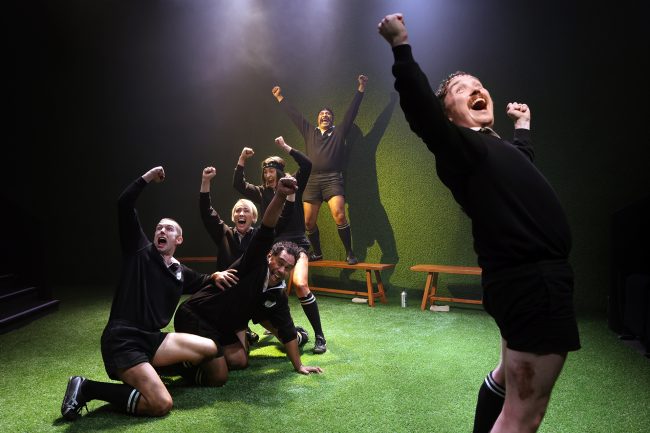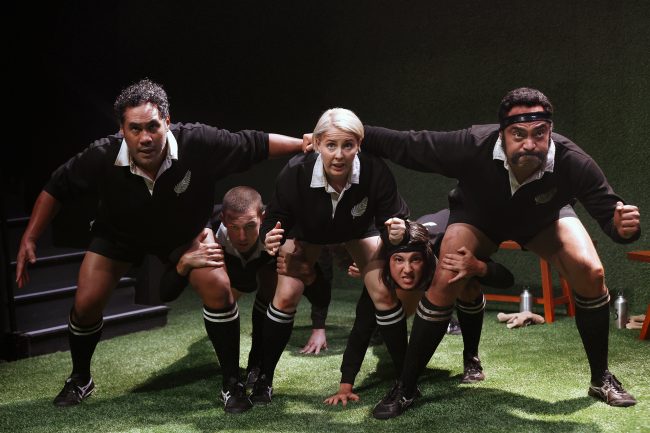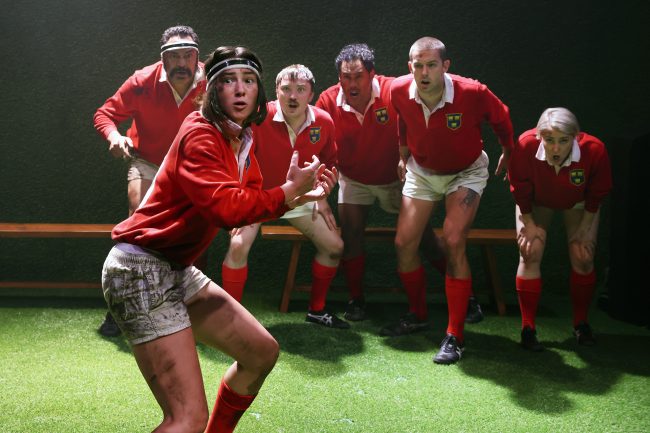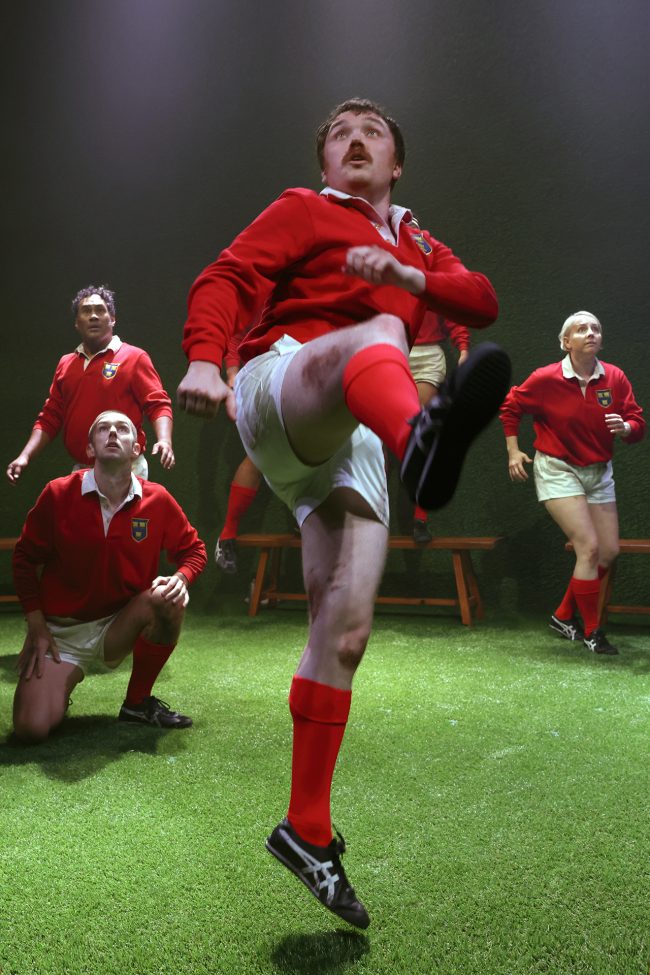
The Ensemble Theatre, 3 February 2024.
Reviewed by Paul Neeson (Arts Wednesday)
Putting my personal biases to one side, that was the most multi-talented cast I’ve seen on stage. Each actor was expert at changing characters and accents in a millisecond, enacting difficult choreography and complex physical theatre in a high-speed relentless performance that had us spell-bound from start to finish.

As to my bias? When I read Alone It Stands was a play about an iconic rugby match from 1978 between amateur team, Munster from Limerick in Ireland, and the mighty all-conquering New Zealand All Blacks, the thought of a blow by blow description of a football game didn’t engender excitement in me. How wrong I was.
Six actors play 62 characters, from rugby players, coaches and fans, to wives, kids, commentators and even a friendly dog. That is where the skill came in. The action switched often between the opposing teams and their fans, calling for accents to coincide at breakneck speed. Never once did they falter thanks largely to Dialect Coach, Linda Nicholls-Gidley. By coincidence I was seated next to an Irishwoman who had seen this play several times (including once in Ireland) and I asked her opinion of the accents. While she wasn’t personally convinced, she said if they were genuine Limerick accents Australians would not have understood a single word. She loved the play saying it was good as every other time she had ever seen it – in some ways better given what the actors were called upon to do.

The action was very physical as you would expect from a contact sport. Quick fire passing, catching, tackling, kicking and scrumming called for choreography as well rehearsed and blocked as a Tchaikovsky ballet. Of course it came down to the expertise of the actors in the end, but without the support crew could they have ever brought it off so convincingly? And here I’m referring to Fight Director, Tim Dashwood. And in the heat of the action there was as much intimate touching as….well, a Ruby scrum. To navigate all this – Intamacy Co-ordinator, Chloë Dallimore.
Probably one of the most powerful moments was the performance of the All Blacks ‘Haka Ka Mate’. This required Cultural Consultant, Tiana Tiakiwai to seek permission not only for a theatrical performance of this traditional and hallowed chant, but also to allow women to participate in what is traditionally a male only Haka. Did I mention two of the six actors, whose characters included rugby team members, were women. Particularly convincing as a tough rugby player was Alex King. You could swear you had seen her sometime in a post-game interview on the television.

Another stand out performer was Tristan Black, whose portrayal of a 12 year old girl was pitch-perfect, despite the ginger moustache. And there was plenty of humour sprinkled throughout the script, such as in the middle of a tackle, the player’s head transforms into a new-born baby breaching from his mother. Each actor had brilliant individual moments and characters, but it was the tireless energy and work of all six that made the evening such a delight to have witnessed.
Director, Janine Watson did an amazing job to bring this play to life and keep the energy, pace and authenticity at a virtuosic level from beginning to end.
This football match has become folklore in Ireland. No-one defeats the All Blacks, let alone an amateur team from Limerick. In the words of playwright, John Breen “There was war in the North, mass unemployment and immigration. It felt like to be Irish was to be cursed, until the Munster rugby team beat the All Blacks in 1978 in Thomond Park and the country went mad with joy..”
Listen to a recent interview with Director, Janine Watson below.